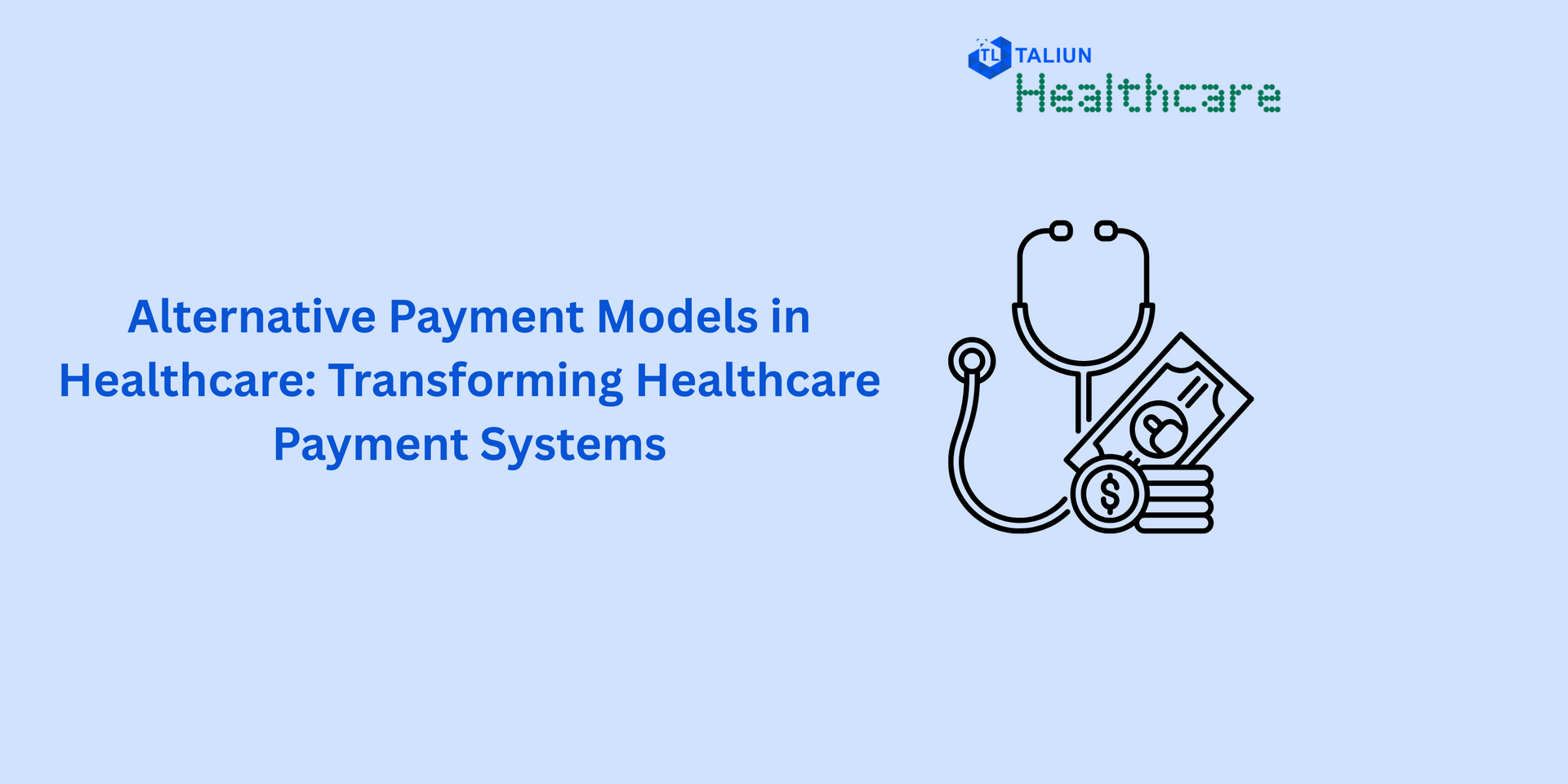Alternative Payment Models in Healthcare: Transforming Healthcare Payment Systems

The U.S. healthcare system is shifting away from volume-driven payments toward models that reward value, outcomes, and coordination. At the center of this transformation are Alternate Payment Models (APMs), innovative strategies designed to improve care delivery while reducing costs. But what exactly are APMs, and how do they work?
This blog breaks down the alternative payment model framework, explores different types of advanced alternative payment models, and explains the difference between MIPS APMs and Advanced APMs. Whether you’re a physician, executive, or care coordinator, this guide offers clarity and strategic insight.
What Are Alternative Payment Models?
Alternative payment models, or APMs, represent innovative healthcare payment models designed to reward providers for delivering high-quality, cost-effective care. Unlike fee-for-service systems, where providers are paid for each service regardless of results, APMs align compensation with how well providers improve patient health. Think of an alternative payment model as a performance contract: instead of paying based on quantity, you pay based on quality and outcomes.
The Centers for Medicare and Medicaid Services (CMS) has been pivotal in promoting APMs through its Innovation Center and legislation like MACRA. Physicians who participate in Advanced Alternative Payment Models are eligible for increased Medicare payment rates and are not required to comply with the standard reporting rules under the Merit-based Incentive Payment System (MIPS)
Problems with Traditional Healthcare Payment Models
Traditional healthcare payment models often operate like a taxi meter, providers are paid for every test, procedure, or visit, irrespective of effectiveness. This volume-driven approach can lead to unnecessary procedures, fragmented care, and escalating costs. For example, a patient with chronic pain might receive multiple costly tests and referrals without coordinated care, which often results in inefficient treatment and higher expenses.
The Alternative Payment Model Framework
The Health Care Payment Learning and Action Network (LAN) defines a structured alternative payment model framework with four categories:
- Category 1: Traditional fee-for-service with no link to quality
- Category 2: Fee-for-service with quality incentives
- Category 3: APMs built on fee-for-service architecture, like shared savings programs
- Category 4: Population-based payments such as capitation, where providers receive a fixed amount per patient
This framework guides providers and payers transitioning from volume to value-based payment systems.
Types of Alternative Payment Models in Healthcare
Several types of alternative payment models healthcare organizations adopt include:
- Bundled Payments: A single payment covers all services during an episode of care, incentivizing efficient and coordinated treatment.
- Accountable Care Organizations (ACOs): Groups of providers jointly responsible for patient populations, sharing savings when they reduce costs and meet quality goals.
- Pay-for-Performance (P4P): Providers receive bonuses for meeting specific quality and performance metrics.
- Shared Savings Programs: Providers share a portion of cost savings achieved while maintaining quality.
- Capitation Models: Providers receive a fixed per-member-per-month payment to manage the care of an entire patient population, promoting cost-effective, preventive, and coordinated care.
- Patient-Centered Medical Homes (PCMH): Primary care models focusing on coordination and patient engagement.
- Advanced Alternative Payment Models (AAPMs): High-level value-based models requiring use of certified health IT, quality benchmarks, and significant financial risk.
Advanced APMs vs MIPS APMs
Both Advanced APMs and MIPS APMs are part of CMS’s Quality Payment Program. But they differ significantly.
- MIPS APMs: These are hybrid models. Providers are scored and rewarded (or penalized) based on quality, cost, and improvement metrics. They involve less financial risk.
- Advanced APMs: These meet stricter requirements. To qualify, a model must:
- Use certified EHR technology
- Base payments on quality metrics
- Include significant financial risk
Clinicians in advanced alternative payment models are eligible for a 5% Medicare bonus and are exempt from MIPS reporting.
Benefits of Alternative Payment Models
Alternative payment models healthcare organizations adopt deliver several advantages:
- Improved Care Coordination: By aligning incentives, providers collaborate more effectively to manage patient care.
- Enhanced Patient Outcomes: Value-based payment encourages interventions that improve health rather than volume of services.
- Cost Containment: APMs help reduce unnecessary spending while maintaining quality.
- Reduced Administrative Burden: Bundled payments and shared savings simplify billing and claims processes.
Challenges to Implementing APMs
Despite their benefits, alternative payment models face barriers like:
- Need for robust data infrastructure and health IT systems.
- Financial risk management as providers assume cost responsibility.
- Organizational resistance to shifting from fee-for-service to value-based care.
- Interoperability issues limiting seamless data sharing.
The Future of Alternative Payment Models
Adoption of alternative payment models in healthcare continues to grow rapidly. Technology like AI and analytics enhances APM capabilities by predicting risks and optimizing care. There is also increasing focus on integrating social determinants of health and expanding APMs into specialty care areas.
Healthcare providers who proactively develop infrastructure and embrace alternative payment models will be better positioned to succeed in the evolving healthcare payment landscape.
At Taliun, we specialize in supporting organizations navigating this shift. From health data infrastructure to analytics for healthcare payment models, we provide the tools needed to transition confidently and stay ahead




